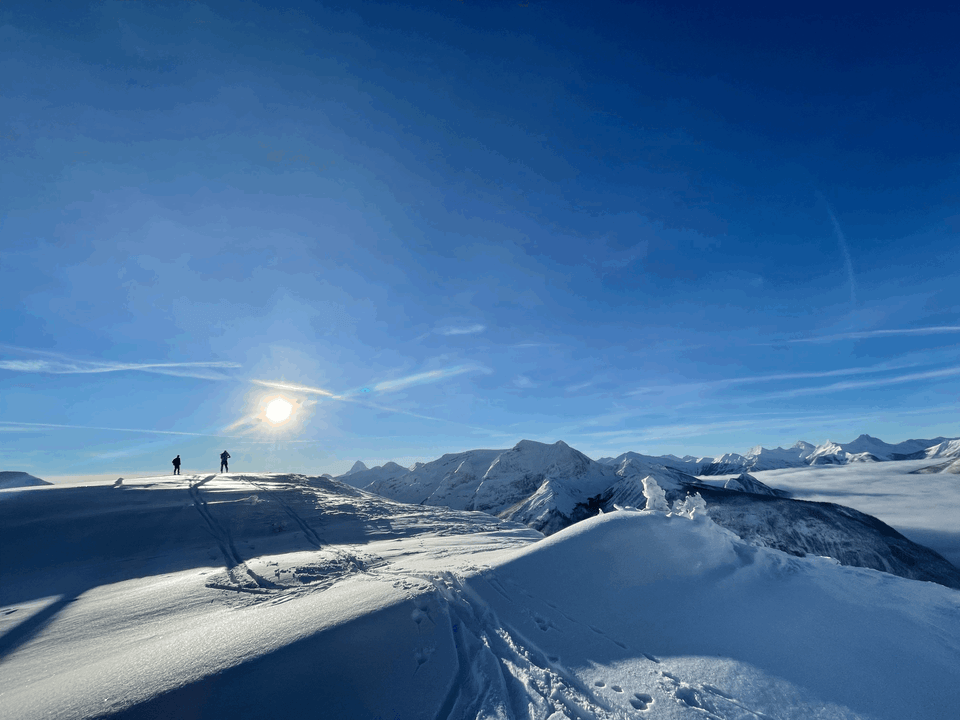The post-run icy plunge. Is it time to reconsider?

Originally in the Crag & Canyon
It’s been pretty darned hot lately. Temperatures have been soaring up into the mid thirties in the Bow Valley. It’s great that we have been having some fantastic warm summer temperatures, and the outdoor decks and bars are no doubt loving it, but I know that a lot of athletes have been finding their runs and rides a bit more of a struggle, especially in the hottest part of the day. I had a long run this last weekend, and I can tell you that I was feeling pretty hot and bothered at the end. Training hard raises our core temperature. If the ambient air temperature is hot, there’s no breeze and the sun is beating down, our core temperature rises rapidly impairing performance. You all know the feeling - you just have to slow down and accept that it’s going to feel like a slog!
Excessive elevations in your core temperature can have real consequences and we call this heat illness, with varying effects from heat exhaustion to full blown heat stroke. For the sake of this article I’m not going to look into management and prevention of serious heat illness, as that’s a much more complex problem, but rather I’m going to look at what seems to be an increasing trend when you’re feeling sweaty and sticky mid-run or ride: The icy plunge! Runners and hikers are all over social media jumping into creeks, rivers, and icy Alpine lakes to cool off. It feels good, there’s no doubt, cooling the jets post-run or ride, but is it actually beneficial? Recently I was asked about the potential risks and benefits of these post exercise cold plunges. Do they help? Do they promote recovery? What’s the optimal timing, and what are there any risks?
Whilst the Alpine lake plunge looks incredible, there are some real inherent risks. The main risk of a cold water plunge is what we call the Cold Shock Response. Sudden cooling causes a constellation of physiological effects, including elevated heart rate and peripheral vasoconstriction where the blood supply to our skin and digits suddenly clamps down. These rapid heart rate changes can induce arrhythmias in susceptible people. Cold can similarly induce hyperventilation (rapid breathing such as in a panic attack) and gasping, which obviously have implications if you are completely submerged under water, increasing the risk of drowning, as well as a sudden elevation in blood pressure (hypertension) and lung pressures (pulmonary hypertension). In extreme cases lungs can fill with water - pulmonary edema. If cooling is prolonged then there is a real risk of hypothermia. If you are out in the wilderness, and inclement weather is on the way, these things can obviously cause serious problems. It is well reported in the literature that treatment of heat illness in ice baths can occasionally lead to hypothermia and the need for re-warming!
The good news is that repeated cold exposure seems to habituate a lot of these responses, so in effect, you do get used to these cold plunges and the physiological effects on your body do appear to moderate in time. The effects seem to be relatively long lasting too, with 4 or 5 sessions of cold water exposure appearing to induce lasting tolerance for up to 7 or 8 months. I would concur that there do seem to be a lot of folks who have no trouble plunging into that cold alpine lake. It appears that I am a wimp - I am certainly not one of them!
If you are healthy, with no pre-existing cardiovascular problems such a coronary artery disease, arrhythmias or hypertension, the risks are low, but in general I would advise that any plunges are short, and of course if the weather is looking iffy then I would completely avoid these dips, especially if it’s going to be difficult to get warmed up again. Hypothermia is not easy to manage in the field.
So what about possible benefits.? Wim Hof (look him up!) and other influencers are forever extolling the benefits of repeated and lengthy cold water immersions. A myriad of largely anecdotal benefits have been touted, including increased longevity, muscle growth, improved cardiovascular profile, weight loss and others. It is important, however, to look at the bigger picture, and to evaluate carefully any purported benefits. Recently it has been shown that whilst it may feel good to take a cold dip, cooling our limbs post workout may in fact blunt a lot of the adaptive long term responses that take place in response to exercise.
After a workout - whether that be a weight lifting session in the gym, or a long afternoon trail run - a whole cascade of inflammatory responses occur. These occur for a reason. Training essentially involves repeatedly adding a stress, damaging our tissues in effect, allowing sufficient time for recovery and adaptation to occur, and then re-stressing the system again. Repeating this cycle over and over again makes us stronger. We repeatedly break down our tissues when we train. With adequate rest and recovery we come out the other end stronger. Stress plus rest equals growth. This is the fundamental basis of training. After a workout, observed effects in our tissues include mild swelling , fluid retention, increases in blood flow, and other hormonal adaptive effects. The purpose of these effects is to help our tissues to repair themselves, ultimately becoming more resilient to additional loading and stress through positive adaptive responses.
Shutting all of this down by dunking in the icy creek may not actually be in your best interests in the long term! Cold water reduces blood flow to damaged tissues, and limits the inflammatory cascade that we are looking for.
Of course, the flip side of this is that soreness, swelling and stiffness may be improved, and subjectively cold immersion seems to promote more rapid recovery in the short term. In controlled clinical trials, subjects reported a more rapid sense of recovery, an arguably subjective measure. However, when muscle breakdown products (CK - Creatine Kinase) are measured, subjects do see more rapid reductions in blood levels when exposed to cold temperatures, and some studies report a reduction in DOMS (delayed onset muscle soreness). Muscle power also seems to recover more rapidly, so additional bouts of exercise can be resumed a bit earlier.
So what should you do?
My advice is that if you’re out there on the trail on a really hot day and the heat is getting to you, a short dunk in an icy creek is unlikely to be harmful. Be cautious of a whole body dunk if you have high blood pressure or any cardiovascular conditions. Be cautious if the weather looks unsettled. Hypothermia in the mountains is no joke. Dunks should be short - think a few minutes at most. Most of the published work suggests that longer bouts of cooling > 12 minutes do not confer benefits over shorter immersions. If you are involved in a multi-day event, or if repeated bouts of intense exertion are needed throughout the day, then short term recovery may be enhanced, though long term adaptations are likely blunted. When I think about the potential benefits of cold water immersion I think of multi-day trail runs, bike rides, and events such as the cross country sprints where repeated heats may be needed throughout the course of a day with short recovery periods. If your main goal, however, is long term adaptation and you are hoping to maximize your training, then I’d skip that cold dip.
As with most things in training, think about what the goal of the session is, and remember that context is important!


